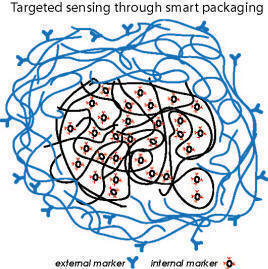|
|
||||||
|
DRUG ENCAPSULATED NANOPARTICLES FOR THE CONTROLLED RELEASE OF DRUG DELIVERY TO BRAIN TUMOR SITES |
||||||
|
The emerging technology of drug-encapsulated nanoparticles plays a critical role in the development of treatment for various life-threatening diseases due to the versatility, control, and future potential of the design of these systems. Previous work has been attempted to design nanoparticles that would provide a controlled release of medicine over a prolonged period of time using a drug adhered to a biodegradable polymer wafer. The setback to a design such as this is the levels of toxicity that can be delivered to other organs in the body due to over-medication of the drug, causing adverse reactions in the rat models. This project proposes to design a drug-delivery vehicle that utilizes a double controlled mechanism that is based on a package within a package system, or a smart-packaging system. The drug will be encapsulated in non-ionic surfactant vesicles, or niosomes, and then embedded in a biodegradable temperature- and ph- sensitive chitosan polymer. |
|
|||||
|
This double packaging system will allow for the controlled release of the drug based on the diffusion properties and physical characteristics of the niosomes and chitosan hydrogel. Hyrdogels offer another advantage in drug delivery due to their ability to take the shape of any shape desired. This is critical in cancer tumor treatment because tumor cavities take on different shapes. Chitosan is a temperature- and ph- sensitive polymer that will begin to gel at physiological conditions within the brain. Embedding the niosome and drug in the hydrogel, control can be given to the total area that is being exposed to the drug. It is the goal of this research to design a novel drug-delivery technique that will provide a safe and effective treatment for brain tumor cells, after major brain tumor surgery, which will improve the quality and duration of survival for these patients. |
||||||



